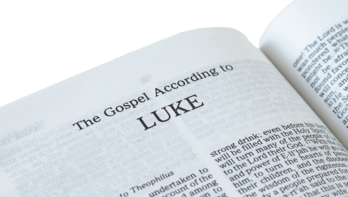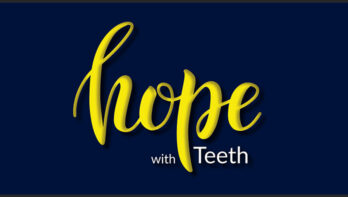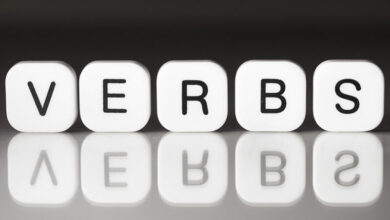Inaccuracy: Journalism’s Deadly Sin
Warnings about ways that inaccuracy can creep into our publications, and practical suggestions for avoiding problems with inaccuracy.
(This article was excerpted from a workshop talk by Patrick H. Alexander, academic editor, Hendrickson Publishers, Peabody, Mass., at the EPA Convention in Springfield, Mo., in May of 1989. Alexander was part of the editing team checking accuracy in the “Dictionary of the Pentecostal and Charismatic Movements.”)
By Patrick H. Alexander
There are two reasons accuracy is so important. Practically speaking, if we look sloppy because our products are historically or factually inaccurate, or if they contain typographical errors, people will not take us seriously.
Ethically speaking, as Christians we should have a burden to be truthful, to be honest, to have integrity. We represent not only our publications: we represent the Gospel.
It’s important to be accurate. On the other hand, we can’t be perfect. We would like to think that we are. But each of us has overseen a project that has come back from the press with errors. Mistakes are going to happen. In fact, the thirteenth edition of “The Chicago Manual of Style” has a running head that’s wrong. We can be too hard on ourselves until we realize we’re not going to be perfect.
There are types of inaccuracies I call the Three Deadly Sins: Plagiarism, misrepresentation, and carelessness.
Plagiarism
Plagiarism still occurs. Hendrickson published a book in which a case of plagiarism is documented extensively-one man’s writings compared to another man’s writings with no acknowledgement. In regarding a manuscript, we should become wary when it suddenly sounds completely different than it did in the last three paragraphs. If you’ve read enough of someone’s work, you can get a feel for their style and tone, and you’ll recognize it when the gears suddenly shift.
Misrepresentation
Misrepresentation is a more common problem. There can be accidental misrepresentation. You’ve seen it. Somebody makes a reference and doesn’t cite the source, or you see quote marks with no explanation as to where this quote came from. That’s okay. But there are other kinds of misrepresentation.
In September 1980, Janet Cooke of the Washington Post won a Pulitzer Prize for a story about an eight-year-old heroin addict. It was later discovered to be fiction. Cooke had misrepresented the truth by using a fictional composite rather than an actual person, and of ourse, the award was taken away from her.
Misrepresentation also occurs in Christian literature. If writers go out of their field—if they start talking about history and they are experts in other areas—take a second look at what they are saying. For examples, ministers are notorious for using Greek and Hebrew terminology. Many don’t have the language skill necessary to be using those kinds of arguments.
Look at their sources. Require your writers to document their manuscripts (not that you have to have footnotes). Query your writers; ask them where they got their information. That will be a deterrent to misrepresentation.
Carelessness
The third kind of inaccuracy is carelessness. Carelessness, of course, sometimes overlaps misrepresentation. How many of us have difficulty achieving consistency in a given work because an author doesn’t know how to spell somebody’s name? What do we do about the choices? Flip a coin?
If you don’t already do so, consider using a style sheet. It will help you achieve consistency. Also, make a habit of questioning the authority about questionable details.
How do we achieve accuracy?
Here are some ways to achieve accuracy:
Have knowledge in your field. If you’re a magazine or journal editor, you probably have a specific audience. Know your field and know the players in it.
Keep up your skill. If you’re likely to come across Greek or Hebrew in your editing, you don’t have to learn how to read the language fluently, but you can learn the alphabets so you can do some checking in a concordance.
Adjust your skills. Make them fit your audience. Know the field you work in. Know the people. Know the literature. That kind of familiarity and knowledge will serve you well in catching inaccuracies.
Have a policy. Mine is “I don’t take anything for granted.” Take time to use your dictionary. Check word divisions. Check the minute things that will make your publication have integrity.
Verify. Don’t accept something in a manuscript that seems off-base, unless you can verify it. If you’re dealing with an expert in the field, you obviously can’t seek independent verification of every detail (how would you validate someone’s statistical analysis of the Pentecostal growth in Nigeria?) but there are things you can check. You don’t have to take everything your writer says at face value. If it doesn’t wash, fix it.
Resources
Style Manual. There are many style manuals available. Know your manual. Stick with it. If you don’t have a style manual, try Zondervan’s Christian writer’s manual or check out the Writing and Editing Sources article in this website.
Dictionaries. Have a variety on hand. For example, if you’re in biblical studies or in religious studies, you should have “The Interpreter’s Dictionary of the Bible (five-volume set) or the one-volume “The New International Dictionary of the Bible.” If you have to edit references to New Testament Greek, you might want a Greek-English lexicon to help you.
Handbooks. Have a grammar handbook on hand. If you work for a missions publication, have a good atlas on your shelf. And some of the college handbooks are a great resource.
People. Finally, get to know people who know things. You can’t be an expert in everything. Know the people you need to know to help you in your work.





